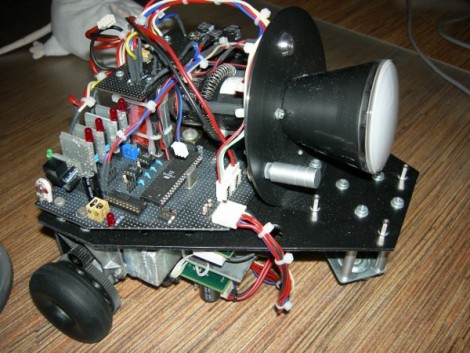The Wobbulator is a black and white CRT television that has additional hardware to manipulate the electrons as they bombard the phosphor layer of the screen. It was created by [June Paik] and you can find it at The Experimental Television Center. [Blair Neal] took some time to share the background information and some video on this interesting device.
The television has a second ”yoke” of coils around the ray tube. The TV still functions normally with these coils installed, but running a signal through them can further manipulate the picture. Hook, them up to a function generator and you can get some pretty wild effects. In this case, the signals from a sound generator are controlling the coils, resulting in the audio/video artwork which you can view after the break.



















